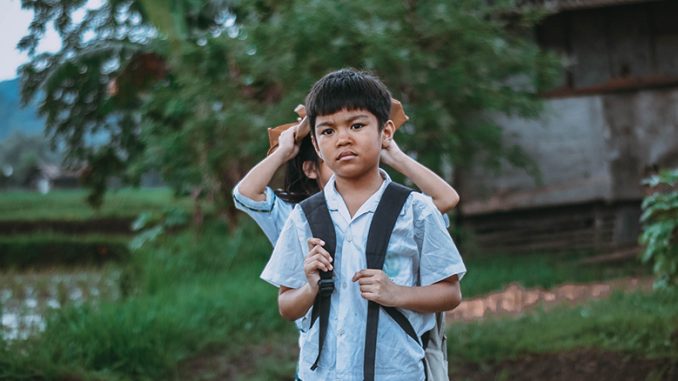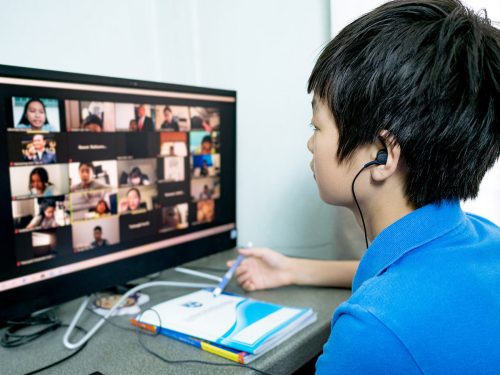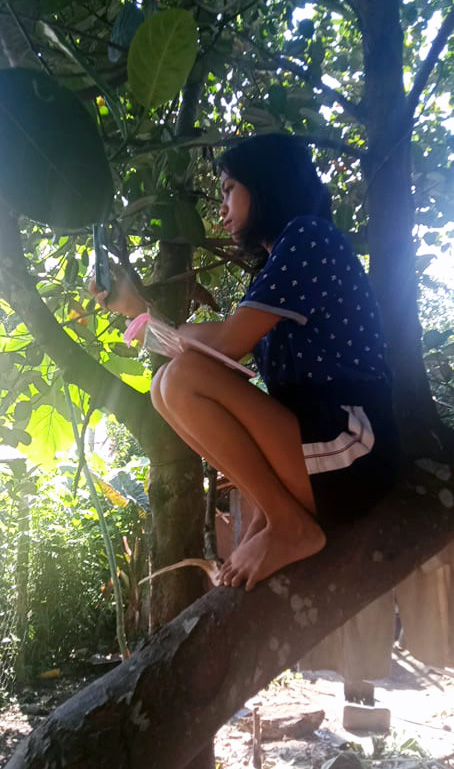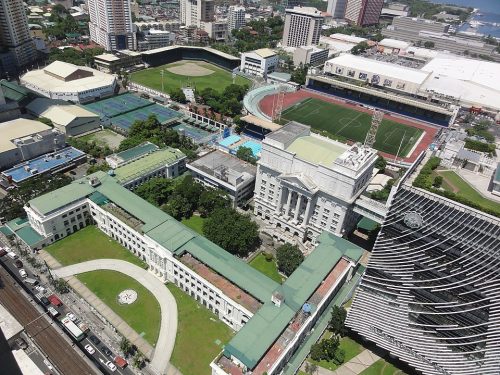
The pandemic has thrown the world into turmoil affecting all aspects of one’s life. From economy, politics, to education, it has brought challenges and as well as new perspectives, compelling all sectors to adapt to the ‘new normal’ conditions. Hence, its effects have been dramatically felt by the educational sector, positing a new notion how school should be amid the pandemic and the devastating typhoons that ravaged the country.
As an educator in the Philippines, I could see how this abrupt shift affected the students. Most of the students in public school are below the poverty line. They strive for meeting their daily needs, normally, some would even skip school to help their parents look for jobs. How much more with modular and online learning, where independent learning is encouraged and an inability to drive students to continue learning despite their economic conditions. In this new method, inequality has become more pronounced while students grapple for resources at the expense of educational continuity.
Thus, the school is supposed to be the responsive agency to address the call of society’s issues and challenges caused by either crisis, modernity, or social change. As a social agency where student’s values and notion of the community and the world develops, is coupled with unintended mishaps that could promote inequalities and discrimination.
In his acclaimed essay, ‘The Miseducation of the Filipinos,’ Renato Constantino asserted that the Philippine education remains heavily colonial as part of American hegemonic control over capital and resources. Thus, the Americans who first offered public education did not intend to liberalize Filipinos and promote democracy but to pacify with overriding American control. This became visible with the continuation of classes in response to UNESCO’s call, ‘that learning quality, access, and system strengthening cannot be compromised in times of crisis, or would have a negative effect on human capital’ (UNESCO, 2017).
With this, even with the current situation of the country and the unpreparedness of the educational system to engage in technologically based and independent learning, no one has been the most impaired but the agents in the roots of the curriculum, the students and teachers. Thus, education became a mere compliance to be at par with the global standard toward educational continuity.
This paper tends to lay down the learning and teaching experiences of both teachers and students from the roots, the neglected sector in the curriculum design during the pandemic and how should the school be in the society defined by alienation and discrimination in times of crisis.
The Banking Education
Paulo Freire is known for his critical pedagogy, the applied educational principles anchored on critical theory wherein educators draw practical and technical knowledge together, creating a space for understanding the relations of power and privilege that manipulate and distort social relationships (Habermas, 1981). Basically, it is the liberation of education from the traditional banking system where the classroom is the arena for oppression, the teacher is the oppressor, and the students are the oppressed caused from so much banking in the classroom compelling to the traditional belief that the teacher becomes better when he/she fills more the receptacle.
With the initiative of DepEd to shift to modular learning, Freire’s claims became more pronounced. Students answer repeated concepts from the readings to the provided questions and critical papers, applying them arbitrarily to anything given for analysis. On the other way, DepEd’s modules would require students to copy answers from the readings to answer critical questions and reflections and perhaps hire a tutor to answer the modules instead. This educational praxis requires students to merely ‘receive, memorize, and repeat’ what is given as knowledge. This also shows the power relationship between the students who can hire someone to help scaffold the complicated concepts and those who have nothing but self-determination to understand independently. They can even access the internet and reinforce information or concepts that deprived the latter.
Critical pedagogy in classroom discourse embodies the practice of engaging students in the social construction of knowledge, which grounds its pillars on power relations (Sarroub & Quadros, 2015). The practice of engaging students in the social construction of knowledge, is however, unattainable to modular learning wherein the teacher constructs the modules without consulting the roots and knowing the type of learners one is dealing with. In this sense, the teacher becomes the sole authority of knowledge and enforces the chosen topic. The students are not allowed to challenge this authority as the key principle for the emancipation of education. Thus, the school becomes the venue for this oppression.

Distance Learning
Distance learning is a form of instruction between two parties (a student and a teacher) that is held at a different time and/or place and uses varying instructional materials (Moore et al., 2010). Today’s definition of distance learning is associated with technology in which learners can access education anywhere and anytime. According to Diosdado San Antonio, Education Undersecretary for Curriculum and Instruction, it accounts to 50,000 schools nationwide that shifted to distance learning. Public schools adopted the modular scheme while some private schools ought to adopt the combination of online and offline modalities known as synchronous and asynchronous classes.
Lisa-Maria Müller and Gemma Goldenberg (2020) in their article ‘Education in times of crisis: The potential implications of school closures for teachers and students,’ find out that the distance learning can be effective if the teaching methods used are of high quality.
Müller and Goldenberg’s findings defined a quality distance learning by giving clear explanations, scaffolding activities, assessments and feedback can be easily attained through virtual classes where teachers discuss the lesson thoroughly. Virtual class was adopted by some private schools while the public adopted the modular learning which instructions and explanations have apparent misinterpretations among students. Instead of being clarified, will be ignored due to communication barriers with classmates and the difficulty of providing immediate feedback by the teachers, who are also struggling with the new system.
Furthermore, they added that families from higher socio-economic backgrounds tend to spend more on their children’s online learning in the current context and are more likely to assist children’s learning, as well as having better access to online learning (Müller & Goldenberg, 2020). Thus, providing a clear picture of the power struggle of the marginalized sector – the students, having the inability to provide resources for online learning, consequently, limiting their capacities to access to quality education. Critical theory calls it ‘Alienation.’ The problem of domination, a complex understanding of how social structures mediate power relations to create different forms of alienation (Sarroub & Quadros, 2015).
Communication between the teacher and the students is the essential part of emancipation of liberal education. Discourse or dialectic process is perhaps the most profound solution according to critical theorists. Marx believed that it can be attained through a revolution by the oppressed class, as influenced by Hegel’s notion of dialectics for the conciliation of socio-historical oppositions (Internet Encyclopedia of Philosophy, 2020) while Freire called it as the humanizing pedagogy where the oppressed must fight for their liberation as a result of conscientization (Freire, 2005).
Moreover, discourse or dialectic process between the teachers and the students suggested by the critical theory as the only way to emancipate oneself from the oppressive education is also far from realization due to lack of communication devices and stable signal or internet connection among learners. If discourse may happen between the teacher and the students it would probably be participated by a few who have the means to do so.
In terms of assessment and evaluation, the outcomes-based education is the newly implemented system, part of the K-12 curriculum that includes giving of performance tasks as the authentic application and assessment of learning. According to Education Undersecretary Diosdado San Antonio, ‘the pandemic compelled them to be more creative and flexible in implementing summative assessment schemes without sacrificing assessment’s credibility.’ However, this remark is not visible in the field. Students tend to ask older brother/sister or tutor to answer the modules. I, myself had experienced this with my nieces and nephews, their parents would hire somebody to answer. This might sound as one of the oppressive acts in critical pedagogy for not letting the students think independently and critically, with the limited time to comply all the modules in a week, it normalizes among the learners to rely on parents or tutors.

The Top-Down Curriculum
The Filipino students have been the most affected in the abrupt shift of educational modality. As provided in the Learning Continuity Plan (LCI), there are 27,770,263 learners enrolled from Kindergarten to Grade 12. This means that the freezing of the entire school year could make a huge difference. Some would be compelled to enter into workforce, worst is the child labor which is rampant in the provinces. As the heart of the curriculum, learner’s needs and interests should be put on the pedestal, which I believe is the essential rule in education. Educational curriculum must be implemented based on their individual needs, later on, become responsive citizens of the country.
However, the way curriculum was designed in the ‘new-normal’ was passed down from the administrators to the teachers for curricular implementation. This scheme is called the ‘Top-down Curricular Approach.’ Undergraduate education students could clearly familiarize the cons of the top-down approach in the curriculum. The curriculum planners and designers including the administrators only see the surface of the roots, the stakeholders in the field are the ones who suffer for its unexpected discrepancies.
Data was gathered before the end of the school year, which purpose is to gather students’ information who have access to the internet and those living in remote areas. This was done through the Learning Information System (LIS) encoded by the teachers, but the data gathered were not presented in the LCP. It was probably the basis for the learning modality to be implemented in the following school year.
The critical pedagogy suggests three ways for its integration in the classroom – synchronously or asynchronously. First, a curriculum must be founded on student’s interests. This includes identifying learner’s strengths, weaknesses, and the learning gap to reach a certain competency. Second, is the student’s cultural needs. The need to know students’ culture is also knowing their identity. From then on, teachers can provide localized and contextualized examples to make learning more meaningful and relevant to their daily activities. Lastly, the student’s community empowerment. These three pronged structure makes education more relevant to any social change that one’s society might be facing with. However, with modular learning and distance education, where education seems like a compliance of modules rather than a problem-posing approach forging students as active means capable of shaking the social stereotypes and status quo that engender oppression and discrimination. Moreso, capable of transcending learning for the transformation of one’s society through critical and open discourse.

Education as an Ivory Tower
Critical theory is cognitive in character as it aims towards enlightening individuals so as to clearly determine what their true interests are (Sarroub & Quadros, 2015). The whole educational experience during the pandemic enlightens all sectors, not just in education, that we should be ready for all the possibilities that the future may offer. We should not make decisions that could hamper one’s development, at the same time could contribute to the burdens of its stakeholders, most especially the marginalized.
The call of the different sectors to have academic freeze or the suspension of classes for this year was not heard due to UNESCO’s educational continuity in times of disasters. This clearly suggests the propensity to compromise human well-being at the expense of capital. It may be difficult to admit but I believe that the raison d’etre of education nowadays, lies in the profit and commercial goals. The capitalist notion of education that the bourgeois has long been dominating. Thus, making education as a mere compliance for the haves to benefit.
With the pursuance of classes, it has made into an agency that spoon feeds the learners with the necessary competencies provided by MELCs. Student’s classes might have been suspended until the educational institution made the fully conceptualized curriculum during the crisis – scrutinizing the possible disparities along its implementation.
Critical theory asserts that knowledge can be obtained only from a societal embedded perspective of interdependent individuals (Internet Encyclopedia of Philosophy). But how can education forge student’s knowledge if the system itself does not embed societal perspective, hence, posing problems and difficulties to teachers, students, and parents.
The executive summary of the Learning Continuity Plan (LCP) states that, ‘the implementation of the LCP will not be easy. It is also not a perfect plan, and operational complications can be expected along the way. Thus, we seek the understanding, support and solidarity of our DepEd family and all our stakeholders.’ Hence, we would have a better education system if it is not rushed, well-managed and well-conceptualized. This executive remark would have been truly remarkable. We would have not defeated the true purpose of education to develop the fullest potential of the students liberating themselves for emancipation and critically address social issues caused by either crisis, modernity, or social change.
According to Michael Viola, ‘Philippine education, therefore, must produce Filipinos who are aware of their country’s problems, who understand the basic solution to these problems, and who care enough and have enough to work and sacrifice for their country’s salvation.’ In the new system of education, this claim seems to be blurry. Students educated amid the pandemic learn for compliance rather than utilizing critical thinking to be responsive agents of the society considering parent’s agony to facilitate learning.
In his book, ‘Gramsci, Freire & Adult Education,’ Peter Mayo asserted that ‘’social institutions such as schools and other … establishments are not ‘neutral;’ rather, they serve to cement the existing hegemony, and are therefore intimately tied to the interests of the most powerful.” Thus, the school plays a crucial role in the struggle to transform society against the horrible capitalism even amid the crisis with careful planning and designing of the curriculum that uplifts the interests of the oppressed.
The Philippine education has not been ready to address the call of online schooling, thus turning into a shining tower untarnished by oppressive walls separating the educational system from what is really happening in society, hence, further elaborates the disparity between the bourgeois and the proletariat to access quality education. Repetition of competencies and lessons for the next school year is perhaps the most expected to happen.
Jeanel C. Gregorio
Jeanel C. Gregorio is a graduate of the Philippine Normal University Visayas and currently studying for a Master’s in Education in Social Studies at the University of the Philippines Visayas.
References:
Basic Education – Learning Continuity Plan (2020). Department of Education. Retrieved from, https://www.deped.gov.ph/wp-content/uploads/2020/06/DO_s2020_012.pdf
DepEd Tayo Bacoor City (2020). Facebook. Retrieved on December 28, 2020, https://www.facebook.com/depedtayobacoorcity/posts/while-deped-acknowledges-the-importance-of-periodical-tests-in-assessing-student/333882764693801/
Freire, P. 2005. Pedagogy of the Oppressed. New York: The Continuum International Publishing Group, Inc. Free PDF download: https://www.academia.edu/37919934/Pedagogy_of_the_oppressed_by_Paulo_Freire
Internet Encyclopedia of Philosophy. Retrieved on December 28, 2020, https://iep.utm.edu/frankfur/
Mendoza, John Eric (2020). 50,000 Schools Shift to Distance Learning. The Manila Times, https://www.manilatimes.net/2020/10/05/news/headlines/50000-schools-shift-to-distance-learning/776448/
Müller, Lisa-Maria & Goldenberg, Gemma (2020). Education in times of crisis: The potential implications of school closures for teachers and students. Chartered College of Teaching. https://my.chartered.college/wp-content/uploads/2020/05/CCTReport070520_FINAL.pdf
Sarroub, L. and Quadros, S. 2015. Critical Pedagogy in Classroom Discourse. University of Nebraska-Lincoln. Free PDF download: https://digitalcommons.unl.edu/cgi/viewcontent.cgi?article=1155&context=teachlearnfacpub
UNESCO (2017). UNESCO Task Force on the 2030 Agenda for Sustainable Development. https://en.unesco.org/creativity/sites/creativity/files/247785en.pdf
Viola, Michael. Hip-Hop and Critical Revolutionary Pedagogy: Blue Scholarship to Challenge ‘The Miseducation of the Filipino.’ University of California, Los Angeles. Free PDF download, http://www.jceps.com/wp-content/uploads/PDFs/04-2-08.pdf
